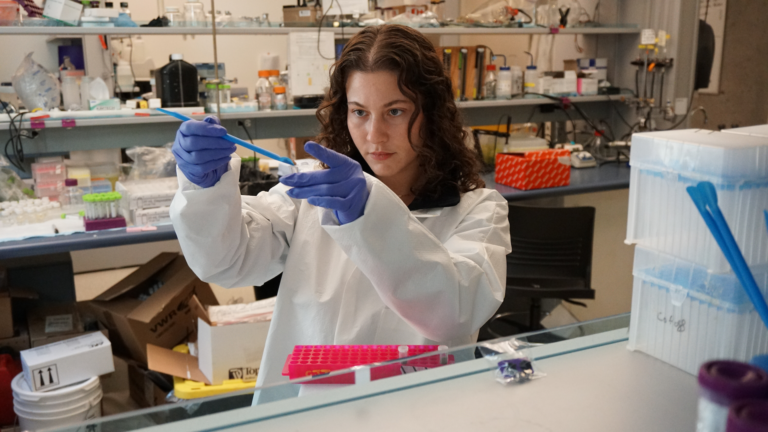UBC’s School of Biomedical Engineering nears student gender parity
UBC's new school of biomedical engineering (BME) is closing in on a milestone of student gender parity.

UBC’s new school of biomedical engineering (BME) is closing in on a milestone of student gender parity.
BME’s female enrolment rate is now 45.9 per cent which makes the BME program close to the faculty of applied science’s goal of achieving 50:50 parity in men and women enrolment.
“Applied Science has worked aggressively to increase the enrolment of women across all of our departments and it will continue to do so,” says James Olson, dean of the faculty of applied science.
“It’s a goal my office, the faculty, and the students are all committed to achieving and I’m proud of how far we’ve come collectively in this area. For too long there’s been a stigma around women in STEM and we’re all working hard to eliminate that outdated notion.”
BME applies fundamental engineering principles and design concepts to medicine and biology with goal of transforming healthcare. Biomedical engineers are developing technologies such as programmable cells to treat disease, point of care systems for early and cost-effective diagnosis, and devices to decrease the prevalence of traumatic injuries. Learning and working at the convergence of biology, engineering and medicine, UBC biomedical engineers should be uniquely positioned to advance health care treatment for Canadians.
The school is an interdisciplinary partnership between the faculties of Medicine and Applied Science and involves more than 20 joint faculty members that are leaders in research areas from molecular and cellular engineering, to biological imaging, computational biology and human interfacing devices.
The school was enabled by the B.C. government’s 2018 technology seat expansion—a sector-wide expansion of student spaces designed to help meet the need for tech-related talent in the province. When fully implemented in 2022-23, UBC programs will have 720 additional spaces, including 355 for BME.

“It’s encouraging to see that we are closing in on achieving gender parity in the cutting-edge field of biomedical engineering,” said Dermot Kelleher, dean of the faculty of medicine and vice-president of health. “We need to remain steadfast in our commitment to ensuring even more women enter the field if we are to truly transform the health of patient populations here at home and around the world.”
“Biomedical engineers are the bridge-builders that connect doctors and engineers,” says Gabrielle Booth, a second-year BME student. “They’re able to speak both the medical and engineering languages and can communicate fluently between them.”
“BME appeals to me because I’m interested in health, helping people and making an impact on other people’s lives,” says Booth. “The interdisciplinary school allows me to do all of those with the added bonus of going on field trips and visiting cadaver labs to learn about how joints work and hearing from industry professionals to learn about real-world applications.”
The school has access to world-leading research infrastructure as well as close partnerships with research-intensive hospitals and the local industry.
Booth, who eventually wants to work in a biomedical company that addresses global health and help increase accessibility to health services upon graduation, believes men and women have equal roles to play in biomedical engineering.

“I think it’s really important to have gender diversity in the field in order for teams to be successful and efficiency and productivity to improve.” says Booth.
Annelies Tjebbes, who graduated through the biomedical option in UBC’s electrical engineering program, and now works as a consultant, agrees.
“Diversity is essential in all facets of our society, and certainly so in engineering,” says Tjebbes.
Tjebbes says it is essential a diversity of perspectives are taken into account when designing a medical device destined to be used by individuals across gender, race, ability and boundaries in order to recognize how different users engage differently with it and plan accordingly.
“For example, a man who doesn’t have the lived experience of using an intrauterine device (IUD) should not be the lead designer on this type of product,” says Tjebbes.
Karen Cheung, director of the BME graduate program says it’s great that the UBC program has a good gender balance, in line with what we see in biomedical engineering programs across North America. “It’s wonderful that UBC established this program to train students to solve problems in biology and medicine. It is from this foundation that we plan to do more outreach to elementary schools, host summer camps and communicate to students of all ages and genders to let them know what biomedical engineers do, and how their education can impact the lives of others in a transformative manner.”

As for prospective students who are interested in studying biomedical engineering, Tjebbes says, “Jump in with both feet! There are many different opportunities that can come from BME. There is also a cohort of alumni, peers and faculty who are here to support you if you need mentorship and will champion you in this profession.”



